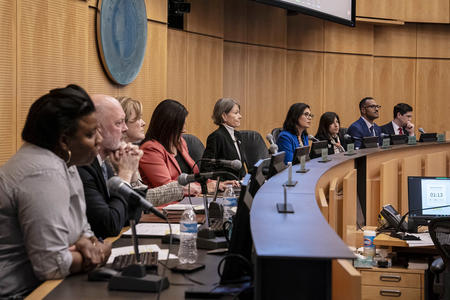“We don’t even have a car. I think shortly after I filled out your survey, our car broke down. We haven’t replaced it yet. We do intend to probably – if we can find the right deal – replace it with an electric,” said Klipsch, who lives in Seattle.
Replacing the car “is a priority, but it’s also a priority that it is as green as we can afford.”
Klipsch was among the readers who responded to a July Crosscut story about the connection between Washington’s new cap-and-trade program and high gas prices, which brought sticker shock for many as the summer kicked off.
Reader responses ranged from grudging acceptance of the cap-and-trade plan’s associated costs to guarded skepticism of the state’s new carbon offset program. A few were very distrustful about how the state would spend the hundreds of millions of dollars expected to be raised by the program.
Before the state’s third carbon auction at the end of August, Washington had already sold $800 million in offsets through the program.
But many who responded supported the state’s efforts to decrease carbon emissions.
“What choice is there?” Klipsch responded.
For Doug Staley of Vancouver, Wash., climate change is one of his primary concerns.
“After the last couple of summers and falls ([with the] smoke and heat), driving a gas-only car seems a little like a crime, contributing to conditions that are essentially terrible,” Staley wrote in an email. In his survey response he said he would consider getting a plug-in hybrid if prices came down.
“It’s very easy to see a time in the near future when grocery shelves are empty, not because of supply-chain issues, but because our system of mass agriculture fails because of heat, or lack of water, or floods. It may be too late already, but then again it might not,” he wrote.
Klipsch echoed those concerns.
“I know that gas prices are going to be high and I support that,” Klipsch said. “In Europe gas prices have always been high, they always pay more than we do. We have always been the biggest polluter historically, and we have not paid our fair share, and it’s time to pay for it now.”
(While China in recent years has been the country with the largest annual production of carbon emissions, the United States has still produced more cumulative carbon emissions than China over industrialized history, a consideration in international climate negotiations.)
However, Klipsch, whose neighborhood has ample public transportation options, said he was also concerned that the least privileged would bear the brunt of the costs.
“I feel for the people who have to commute from Tacoma and have to go to downtown Seattle. That to me is the hard part — the inequality of all of this. So many people can’t live in an area where they have easy access to public transportation. They’re the ones who are going to be paying more than their fair share.”
In July, Washington gas prices were the highest in the U.S. at an average of $4.95 a gallon for regular — $1.41 above the nation’s average, according to the AAA. According to the auto club, Washington’s regular gas prices rose about 8% from this time last year, compared to a slight decrease in the national average over that same period.
At the end of August California topped the list, but Washington gas prices were still more than $1 above the national average – $5.10 a gallon versus $3.82.
Washington’s new cap-and-trade program, which became law in 2021 and went into effect this year, was one reason the state’s gas prices soared faster than the national average. Gov. Jay Inslee’s office told Crosscut earlier this year that other factors, including maintenance work in the state’s refineries, have pushed gas prices upward, but both program supporters and critics said the increase at the pump was one of the expected outcomes.
The cap-and-invest program aims to decrease carbon emissions in the state to meet emissions reduction goals for 2035 and 2050. A 2008 state law already called for overall emissions to be reduced to 50 million tons by 2030, to 27 million tons by 2040 and to 5 million tons by 2050. In 2019, the most recent year reported, Washington produced 102.1 million metric tons of greenhouse-gas emissions, an increase from the previous year, according to the Department of Ecology.
The state’s cap-and-invest program requires companies that generate more than 25,000 metric tons of carbon to bid on allowances to offset the pollution that they generate. The auctions occur quarterly. The first two auctions brought in $800 million for 17 million allowances, with each allowance offsetting about one metric ton of carbon.
The money generated by the auction is then reinvested in environmental projects, which could include replacing gas-powered public transportation with electric vehicles, restoring salmon habitat, building clean energy projects and more.
More than one respondent said they would have more confidence in the program if they could see some tangible or measurable benefit of the money being collected.
Klipsch asked, “$300 million is available now – how is that being spent? I’m not seeing that in more charging outlets or better public transportation.”
Staley, who describes his east Vancouver neighborhood as “ultra-suburbia” with few people opting for public transit, hopes that the money raised by the state goes toward investing in alternative, non-fossil fuel energy sources – and not sent back to the polluters.
“I think my confidence would be shaken when I see the money raised going back to fossil fuel companies,” he wrote. “Those companies are already producing ads (propaganda?) assuring us how they are not ‘energy’ companies, but ‘human’ companies. Whatever that means.”
Updated Sept. 7, 2023: Information that contextualizes the United States' history of carbon emissions has been added to this story.



